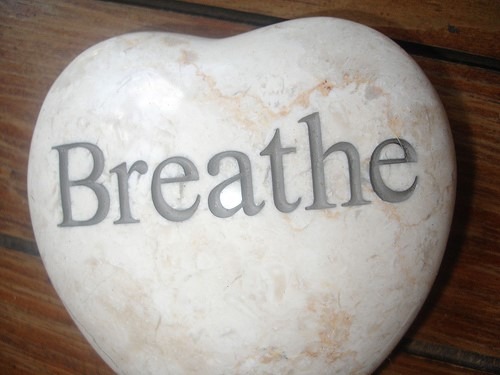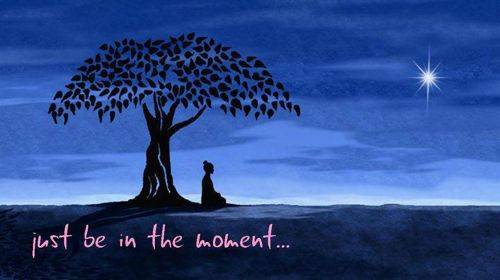Mindfulness techniques are more important today than in the past to help balance our energy. With so many fast energies swirling in and out of our days, it is imperative we learn the tools we need to succeed.
Stress Effects Without Mindfulness Techniques
As organizations navigate through the ever-changing global market, employees and leaders are bombarded with constant change, which in turn increases conflict and stress, internally and with others. Scholars have discussed how this constant change and conflict can have a negative effect on the mindset or abilities of leaders and employees to cope with these situations by increasing stress.
When we get stressed, our mental capacity decreases because we are worrying about whatever it is that is stressing us out. Stress, in turn, can negatively affect work-life-balance, ability to manage conflicts, and ability to work collaboratively together, which can then negatively affect performance, health, and even happiness. It is a vicious cycle that mindfulness techniques might be able to help break.
Benefits of Using Mindfulness Techniques
Because each of us are unique, we all have different coping mechanisms and varying degrees of skills when it comes to dealing with change, overcoming conflict, managing stress, and ultimately breaking the cycle. Did you know that mindfulness has been discussed as a contributing factor to success in these areas?
In fact, mindfulness has been shown to help regulate emotions, especially for individuals in jobs with high emotional labor such as leaders and individuals in customer service-type jobs. Additionally, several studies have shown the benefits of developing the ability to self-regulate and use mindfulness techniques to help manage stress, make better decisions, and manage relationships better.
Developing Mindfulness
Mindfulness has been described as conscious awareness or awareness of present experience, a practice of letting go, and the ability to respond to outside demands in a non-judgmental way. To develop mindfulness, scholars have identified several techniques and topics on which to train individuals such as observing, questioning and dialoguing, reflection, and systems thinking. For instance, by asking questions and opening a dialogue with others, we are acknowledging and honoring them, which is key to understanding the viewpoints of others and letting go of ego-driven assumptions.
Furthermore, scholars have discussed several exercises and tools that we may use anytime, anywhere to help increase conscious awareness or mindfulness. Some of these tools are meditation, focusing techniques, conscious breathing techniques, body awareness exercises, appreciation and gratefulness exercises, and prayer. Here are a few easy mindfulness techniques you can try to help develop and increase your mindfulness.
Mindfulness Technique 1: Observing Colors
Perhaps you are thinking about or you are actually in a situation that is emotionally charged and it brings up anger, nervousness, frustration, guilt, fear, grief, or something else that is negatively affecting you. Start by observing your surroundings, wherever you are. Observe the colors you see in objects that surround you. Notice what they are made of whether they are smooth or rough, shiny or dull, cold or warm.
As you observe, can you find every color of the rainbow? Can you find different shades of certain colors? Continue observing until you feel a sense of peace, detachment, or clarity.
Mindfulness Technique 2: Observing Senses
This time, again start by observing your surroundings. As you observe, name three things you see. Now, name three things you hear. Now, name three things you can feel. Now, name three things you can smell- perhaps your hair, your clothes, or your hands. Now, can you taste anything? As you observe, notice your body relaxing and any distracting thoughts being replaced by observations.
Continue observing noticing what makes your senses happy such as pleasing sights, sounds, smells, and sensations, until you feel a sense of peace, detachment, or clarity.
Mindfulness Technique 3: Observing Feet
Begin the same way by observing your surroundings. Now place both feet firmly on the floor while either sitting or standing. If sitting, ensure your back is straight and observe the firm support of the chair beneath you. Now, close your eyes and feel your feet touching the floor, rooting down into the ground. Imagine beautiful roots coming from the bottoms of your feet and going deep into the ground, connecting you, grounding you. Now, observe your breath as you observe your feet connecting to the earth. Slowly inhale to a count of 5, slowly exhale to a count of 5, and repeat at least 3-5 times.
Open your eyes and continue observing the connection of your feet to the ground beneath you as you continue your day.
Conclusion
The goal with practicing mindfulness techniques is to reduce the impact of stress in our lives, help us cope with change and difficult situations, help us think more clearly, and make better decisions that will positively impact our lives. Just a few minutes of practicing mindfulness techniques throughout the day or when you feel at your worst may help you gain more awareness of your present situation and help you cope with what comes your way.
When we get mindful, our mental capacity increases because space is not being taken up by things that worry and stress us out. Mindfulness, in turn, can help bring balance to our stressful lives, help us manage conflicts better, and increase our ability to work cooperatively with others, which can then positively affect performance, health, and even happiness. Happy minding!
To learn more about mindfulness techniques and skills, click on this sentence.
References
Anderson, D. & Anderson, L. A. (2010). Beyond change management: How to achieve breakthrough results through conscious change leadership, 2nd Edition. [VitalSource Bookshelf version]. Retrieved from http://digitalbookshelf.argosy.edu/books/9781118837900/id/anderson8087c04-fea-0001
Heydenfeldt, J., Herkenhoff, L., and Coe, M. (2011). Cultivating mind fitness through mindfulness training: Applied neuroscience. Performance Improvement, 50(10), 21-27. doi: 10.1002/pfi
Hobson, C. J., & Delunas, L. (2009). Efficacy of different techniques for reducing stress: A study among business students in the United States. International Journal of Management, 26(2), 186-196. Retrieved from http://search.proquest.com/docview/233228643?accountid=34899
Hülsheger, U. R., Alberts, H. J. E. M., Feinholdt, A., & Lang, J. W. B. (2013). Benefits of mindfulness at work: The role of mindfulness in emotion regulation, emotional exhaustion, and job satisfaction. Journal of Applied Psychology, 98(2), 310-325. doi:http://dx.doi.org/10.1037/a0031313
Marsh, C. (2013). Business executives’ perceptions of ethical leadership and its development. Journal of Business Ethics, 114(3), 565-582. doi:http://dx.doi.org/10.1007/s10551-012-1366-7
Yu, M., PhD. (2009). Employees’ perception of organizational change: The mediating effects of stress management strategies. Public Personnel Management, 38(1), 17-32. Retrieved from http://search.proquest.com/docview/215950700?accountid=34899
Additionally, check out my interview on Parkbench.com. Meet Amanda – and learn about Dandi Within!
Also listed as one of the Top 3 Hypnotherapy services in Chandler, AZ.
Certified through:









